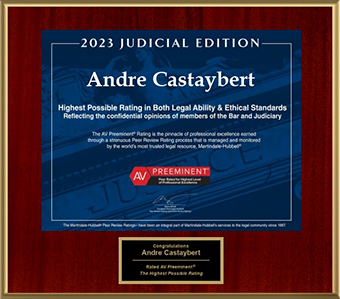How Mediators and Arbitrators Can Utilize Generative AI
July 9, 2024
HOW MEDIATORS AND ARBITRATORS CAN UTILIZE GENERATIVE AI
A recent article by the AI Working Group of the American Arbitration Association (AAA) explores how generative AI may be used in arbitration and mediation and discusses potential future developments at the intersection of technology and dispute resolution. The authors, all experienced arbitrators, share their insights from using these tools in various cases. They emphasize that generative AI aims to enhance efficiency, provide deeper insights, and achieve a level of precision previously unimaginable rather than replacing human judgment.
The article is divided into subsections that discuss the current applications of AI in dispute resolution, compare current generative AI models, explore AI’s role in legal research, and examine how AI can assist in document generation.
Comparison of Current Generative AI Models: The article compares query results from various generative AI models, including Casetext’s CoCounsel, Anthropic’s Claude Pro, and OpenAI’s Chat GPT-4.
Current Applications of AI in Dispute Resolution: The article highlights key features of AI’s role in document analysis and comparison. Neutrals can use AI search and index functions to quickly answer questions about large document sets, while the compare content feature identifies similarities, differences, and evidentiary inconsistencies from numerous documents. Contract review capabilities help focus on dispute resolution provisions scattered throughout contracts, and summarization functions can condense large document sets efficiently.
The Expanding Role of AI in Legal Research: Neutrals can use AI’s research function to explore legal topics in preparation for mediation, filling gaps left by parties’ mediation memoranda. Arbitrators can review legal contentions in arbitration filings, and mediators, where appropriate, can use generative AI to verify the accuracy of claims or facts with publicly available information.
The Forward-Looking Approach of Document Generation: Generative AI can assist arbitrators and mediators in creating and editing documents, offering benefits such as time and resource efficiency, enhanced creativity and innovation, and improved quality and consistency. However, challenges include ensuring accuracy and reliability, and maintaining ethical standards and professional responsibility. AI’s potential as a drafting tool is vast, encompassing tasks like drafting arbitration agreements, mediation clauses, mediation statements, arbitration pleadings, procedural orders, plans, settlement agreements, and much more.
While machines aren’t yet capable of independently handling legal analysis, decision-making, or dispute resolution, they can significantly support arbitrators and mediators who understand the technology’s capabilities and limitations. These advancements offer great promise, but must be used with care to ensure human judgment, empathy, and ethics remain central in arbitration and mediation.
To read more the full article titled “Dispute Resolution Enhanced: How Arbitrators and Mediators Can Harness Generative AI”, click here.
To read how CASTAYBERT PLLC can assist you with ADR matters, click here.









